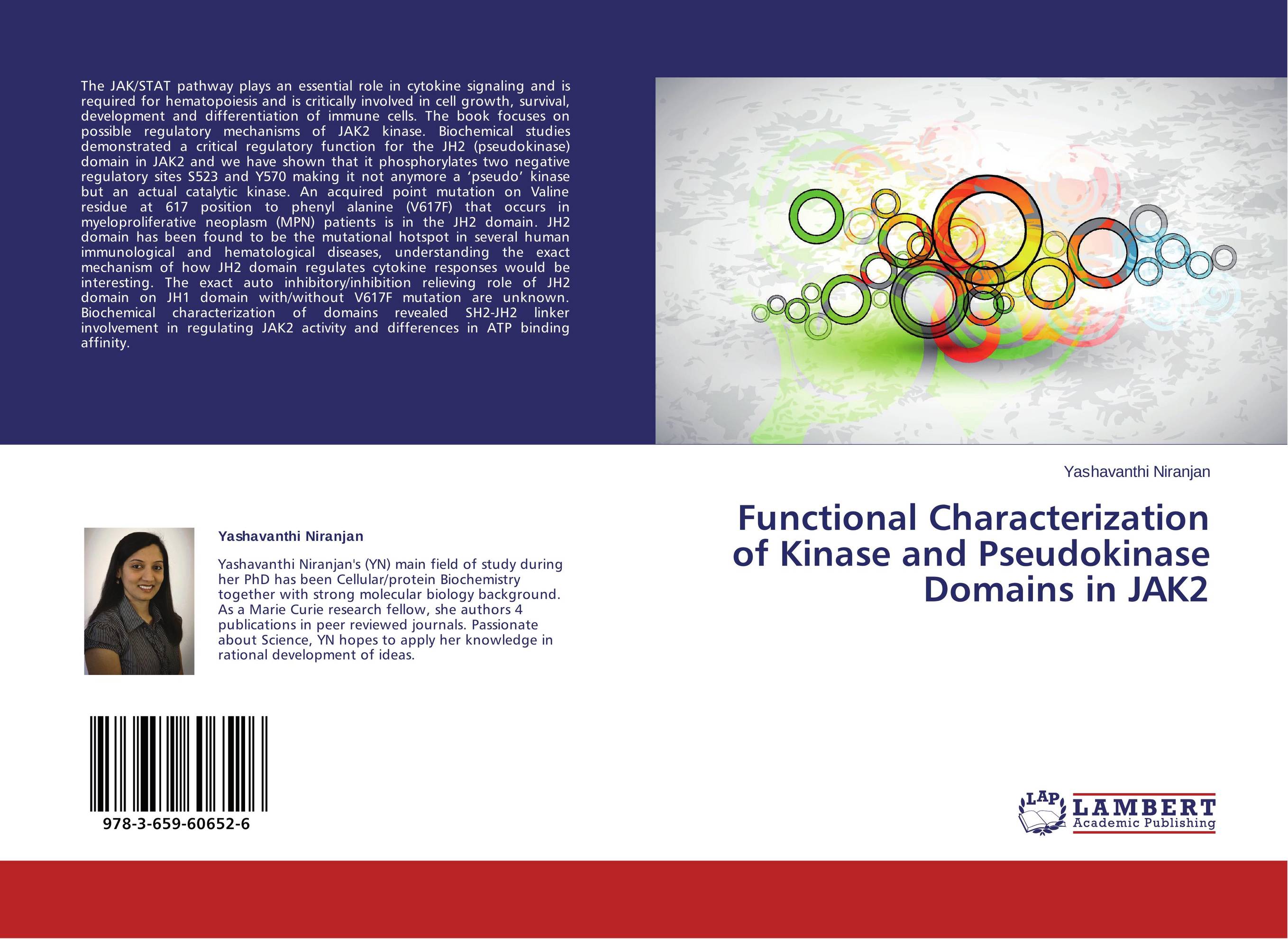| Поиск по каталогу |
|
(строгое соответствие)
|
- Профессиональная
- Научно-популярная
- Художественная
- Публицистика
- Детская
- Искусство
- Хобби, семья, дом
- Спорт
- Путеводители
- Блокноты, тетради, открытки
Functional Characterization of Kinase and Pseudokinase Domains in JAK2.

В наличии
| Местонахождение: Алматы | Состояние экземпляра: новый |

Бумажная
версия
версия
Автор: Yashavanthi Niranjan
ISBN: 9783659606526
Год издания: 2014
Формат книги: 60×90/16 (145×215 мм)
Количество страниц: 92
Издательство: LAP LAMBERT Academic Publishing
Цена: 31605 тг
Положить в корзину
| Способы доставки в город Алматы * комплектация (срок до отгрузки) не более 2 рабочих дней |
| Самовывоз из города Алматы (пункты самовывоза партнёра CDEK) |
| Курьерская доставка CDEK из города Москва |
| Доставка Почтой России из города Москва |
Аннотация: The JAK/STAT pathway plays an essential role in cytokine signaling and is required for hematopoiesis and is critically involved in cell growth, survival, development and differentiation of immune cells. The book focuses on possible regulatory mechanisms of JAK2 kinase. Biochemical studies demonstrated a critical regulatory function for the JH2 (pseudokinase) domain in JAK2 and we have shown that it phosphorylates two negative regulatory sites S523 and Y570 making it not anymore a ‘pseudo’ kinase but an actual catalytic kinase. An acquired point mutation on Valine residue at 617 position to phenyl alanine (V617F) that occurs in myeloproliferative neoplasm (MPN) patients is in the JH2 domain. JH2 domain has been found to be the mutational hotspot in several human immunological and hematological diseases, understanding the exact mechanism of how JH2 domain regulates cytokine responses would be interesting. The exact auto inhibitory/inhibition relieving role of JH2 domain on JH1 domain with/without V617F mutation are unknown. Biochemical characterization of domains revealed SH2-JH2 linker involvement in regulating JAK2 activity and differences in ATP binding affinity.
Ключевые слова: Janus Kinases, Functional assays, kinase and pseudokinase domains



